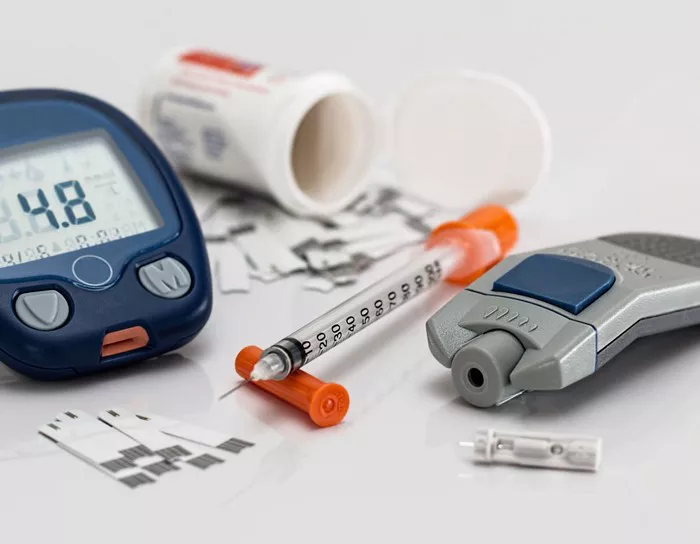Insulin, a hormone produced by the pancreas, plays a crucial role in regulating blood sugar levels and facilitating the uptake of glucose into cells for energy production. For individuals with diabetes, insulin therapy is often necessary to manage blood sugar levels and prevent complications. Over the years, various types of insulin have been developed to meet the diverse needs of patients with diabetes. In this comprehensive guide, we will explore the four main types of insulin, their characteristics, and their clinical applications.
1. Rapid-Acting Insulin
Rapid-acting insulin analogs are designed to mimic the rapid onset and short duration of insulin secretion seen in healthy individuals after meals. These insulins have an onset of action within 10 to 30 minutes, peak effect within 1 to 2 hours, and duration of action lasting up to 4 to 6 hours. Rapid-acting insulins are typically administered just before or immediately after meals to control postprandial blood sugar spikes.
Common examples of rapid-acting insulin analogs include:
Insulin Lispro (Humalog): Lispro insulin has a rapid onset of action, making it suitable for controlling blood sugar levels around mealtimes. It is often used in combination with longer-acting insulins to provide basal-bolus insulin therapy.
Insulin Aspart (NovoLog/NovoRapid): Aspart insulin exhibits similar pharmacokinetic properties to lispro insulin, with a rapid onset and short duration of action. It can be administered via subcutaneous injection or through insulin pumps.
Insulin Glulisine (Apidra): Glulisine insulin has a rapid onset of action, reaching peak levels within 1 hour of administration. It is commonly used in intensive insulin therapy regimens to mimic physiological insulin secretion.
Rapid-acting insulins offer flexibility in meal timing and composition, allowing patients to adjust their insulin doses based on carbohydrate intake and anticipated activity levels.
2. Short-Acting (Regular) Insulin
Short-acting insulin, also known as regular insulin, has been a mainstay of diabetes treatment for decades. Unlike rapid-acting insulins, which are analogs designed for rapid absorption and action, regular insulin is derived from recombinant DNA technology and has a slower onset and longer duration of action.
Key features of short-acting (regular) insulin include:
Onset of action: 30 to 60 minutes
Peak effect: 2 to 4 hours
Duration of action: 5 to 8 hours
Regular insulin is typically administered 30 to 60 minutes before meals to control postprandial blood sugar levels. It can also be used in insulin infusion pumps for continuous subcutaneous insulin infusion.
Despite the development of newer insulin analogs with more predictable pharmacokinetic profiles, short-acting insulin remains an essential treatment option for some patients, particularly those with specific medical conditions or preferences.
3. Intermediate-Acting Insulin
Intermediate-acting insulin is characterized by its slower onset and more prolonged duration of action compared to rapid-acting and short-acting insulins. These insulins are designed to provide basal insulin coverage between meals and overnight, helping to maintain stable blood sugar levels throughout the day.
The most common intermediate-acting insulin is:
Neutral Protamine Hagedorn (NPH) Insulin: NPH insulin is a suspension of insulin combined with protamine and zinc, which slows its absorption and prolongs its action. It typically has an onset of action within 1 to 2 hours, peak effect within 4 to 12 hours, and duration of action lasting up to 18 to 24 hours.
NPH insulin is often used in combination with rapid-acting or short-acting insulins to provide both basal and prandial insulin coverage in a single injection regimen. However, its variable absorption and prolonged duration of action can pose challenges in achieving optimal glycemic control, leading to fluctuations in blood sugar levels.
4. Long-Acting Insulin
Long-acting insulin analogs are designed to provide basal insulin coverage with a relatively constant and prolonged duration of action, mimicking the continuous basal secretion of insulin seen in individuals without diabetes. These insulins offer the advantage of once-daily or twice-daily dosing, reducing the frequency of injections and providing more predictable blood sugar control.
Common examples of long-acting insulin analogs include:
Insulin Glargine (Lantus, Basaglar, Toujeo): Glargine insulin is a basal insulin analog with a flat and prolonged duration of action, lasting up to 24 hours. It is formulated to form microprecipitates at the injection site, resulting in slow and continuous absorption into the bloodstream.
Insulin Detemir (Levemir): Detemir insulin is a long-acting basal insulin analog that binds to albumin in the bloodstream, extending its duration of action. It typically lasts up to 18 to 24 hours and offers flexibility in dosing frequency.
Insulin Degludec (Tresiba): Degludec insulin is an ultra-long-acting basal insulin analog with a duration of action exceeding 24 hours. It forms soluble multihexamer complexes upon injection, providing a consistent and prolonged release of insulin.
Long-acting insulin analogs are commonly used as part of basal-bolus insulin therapy regimens, in combination with rapid-acting or short-acting insulins to provide both basal and prandial insulin coverage. They are also suitable for use in insulin pump therapy, offering stable basal insulin delivery throughout the day.
Conclusion
In summary, insulin therapy plays a central role in the management of diabetes, helping to regulate blood sugar levels and prevent complications. The four main types of insulin—rapid-acting, short-acting, intermediate-acting, and long-acting—offer diverse options for achieving glycemic control and meeting the individual needs of patients with diabetes. By understanding the characteristics and clinical applications of each type of insulin, healthcare providers can tailor treatment regimens to optimize outcomes and improve quality of life for patients with diabetes.
Related topics:
Do You Know the A1c Level at Which Insulin Therapy is Required?


























